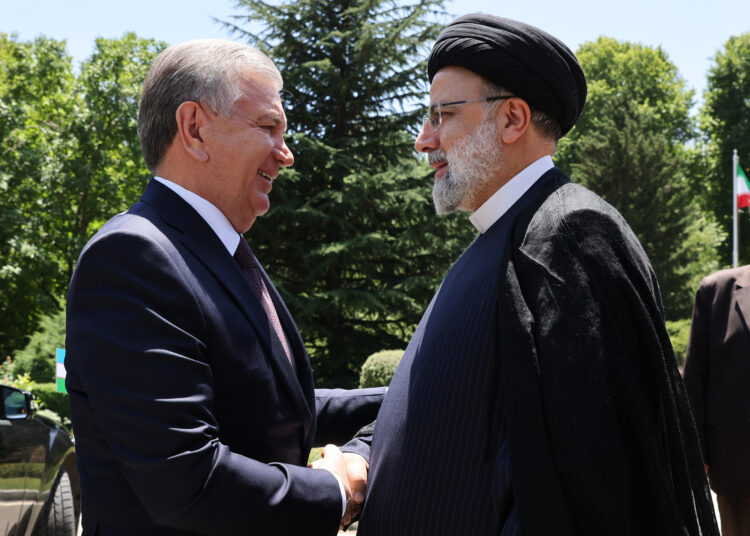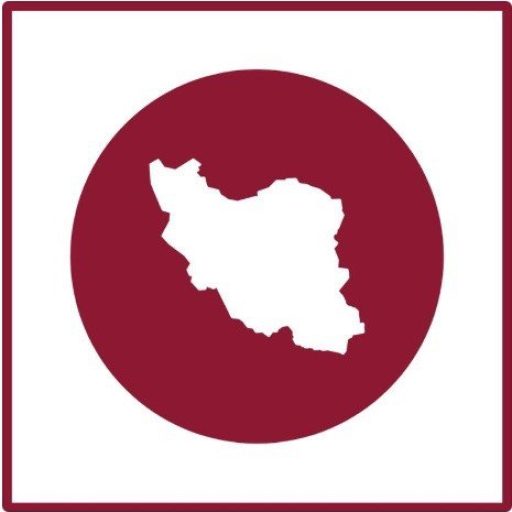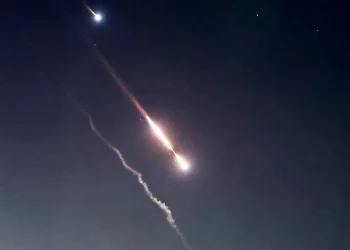Uzbekistan, in the eyes of Iran, is a mystique segment of the grand plateau of ancient Persian civilization, vividly illustrating a cultural landscape peppered with rich veins of political, economic, cultural, and security benefits. In parallel, Iran emerges for Uzbekistan as the indispensable link to international waters.
Within the frame of its broader regional policy and an expansive, long-reaching geo-economic vision, the nurturing of Iran-Uzbekistan relationships plays an integral part in a multitude of geostrategic equations. Branded the heart of Central Asia due to its geographic closeness to the remaining four nations inhabiting the region — Kazakhstan, Tajikistan, Kyrgyzstan, and Turkmenistan — Uzbekistan is strategically positioned to actively engage with and utilize transit projects and communication conduits therein. These include formidable projects like China’s far-reaching Belt and Road Initiative, the geo-strategically significant North-South Corridor (Iran-Russia), and the Middle Corridor (Turkey), coupled with other ambitious initiatives, such as the Afghanistan-Iran-Uzbekistan transit project, anchored in Chabahar port. This tethering of Uzbekistan at such an influential geostrategic crossroads deems it a highly enticing prospect for Iran in Central Asia. Simultaneously, Uzbekistan’s landlocked status demands that Tashkent allocates Iran a nodal position in its geopolitical schematics and geo-economic masterplans. From an Iranian perspective, it is the geo-economy that can tip the scales toward a strategic elevation of the Tehran-Tashkent ties.
Unlocking geo-economic potential in Iran-Uzbekistan relations
Amidst vigorous global geopolitical tug-of-wars, Iran and Uzbekistan can wield their brisk geo-economic prowess to achieve a multitude of national, regional, and international objectives. Uzbekistan, in the eyes of Iran, is a mystique segment of the grand plateau of ancient Persian civilization, vividly illustrating a cultural landscape peppered with rich veins of political, economic, cultural, and security benefits. In parallel, Iran emerges for Uzbekistan as the indispensable link to international waters.
As per the 2011 Ashgabat Agreement, the Uzbekistan-Turkmenistan-Iran pathway is one of Uzbekistan’s pivotal connections to the open sea, knitting seamlessly into the North-South Corridor’s blueprint. Iran’s eagerness to kick-start international freight movements, as proposed in the 2003 Iran-Uzbekistan-Afghanistan agreement, amplifies this sentiment. Recent multilateral dialogues, such as the 26th annual economic forum in St. Petersburg, Russia, saw discussions on an intricately negotiable agreement involving Iran, Turkmenistan, and Russia pertaining to transit, fuel norms, roadways, and maritime matters. This collaborative effort can be perceived as an extension of attempts to quicken the pace of North-South Corridor’s practical realization.
Latest developments in Tehran-Tashkent relations
June 18’s visit of President Shaukat Mirziyayev of Uzbekistan to Iran can be seen as a pivotal intersection in the Tehran-Tashkent relationship. This diplomatic visit marked the signing of 10 bilateral agreements encompassing preferential trade agreements, transit, pharmaceutical cooperation, standardization and insurance paradigms, proposals for joint free zones, and collaborative plans in the technology, innovation, and agricultural sectors. This burgeoning set of agreements, observers hint, forges a new-found strategic bridge between Iran and Central Asia’s core.
Both Tehran and Tashkent are keen on inflating their economic engagement. The immediate goal is to swell the trade volume from the existing $400 million to $1 billion, with a long-term vision of stretching this to $3 billion deemed achievable. To reach this target, the nations are employing bilateral mechanisms such as preferential trade agreements, transit contracts, and monetary exchanges. Additionally, multilateral platforms like the Economic Cooperation Organization (ECO) and the Shanghai Cooperation Organization (SCO) offer further pathways.
Shaping factors in Tehran-Tashkent diplomatic interactions
The visit of Shaukat Mirzayev to Tehran constituted the initial visit ever undertaken by Uzbekistan’s current Head of State to Iran, reminiscent of the erstwhile journey conducted in 2003 by the former President Islam Karimov. Historically, Western influences have tainted Uzbekistan’s rapport with other nations, specifically those of Iran and Russia, staining them with detrimental imprints. Yet, since 2005, Tashkent has been subtly and persistently adjusting its bearings with the United States, and this transition is simultaneously visible in its approach toward Iran. Uzbekistan’s quest to secure and assert itself as a regional powerhouse dictates Tashkent’s international strategy, urging it to seek collaboration with Tehran and other regional, along with extra-regional, actors.
The echoes of Islam Karimov’s reign, the inaugural president of the Uzbek Republic, still resound in its domestic and diplomatic policies. In realms spanning from politics and military to the economy, it has underscored ambitious and interactive tactics with both Eastern and Western blocs.
Throughout the preceding decade, Uzbekistan attained recognition for its fluctuating foreign policy, which swayed incessantly between Eastern and Western powers. Consequentially, Russians perceive it as a volatile and unreliable partner and ally, which fragments and undermines collaborative regional endeavors through its adoption of divergent stances, predominantly those catered on Russia. Nevertheless, Moscow remains resolute in its determination to augment relations with Tashkent, attempting to retain a controlling hand in Central Asia’s dynamics.
Given Uzbekistan’s desire to oversee an encompassing influence over the other nations of Central Asia, the probability of it striving to balance its stakes with its primary economic allies – Russia and China, along with Western interests, remains high. Tashkent also exhibits a keen interest in nurturing its relationship with Turkey. Ankara emerges as a crucial political and economic collaborator for Uzbekistan, considering its role as a transitory corridor for facilitating the export of Uzbek commodities to Europe. Conversely, Uzbekistan casts a potential marketplace for Ankara’s commercial goods, opening up access points to Eastern regions.
Other shaping factors impacting Uzbekistan’s regional conduct include border disputes with Tajikistan and Kyrgyzstan, and looming security concerns. Being the most densely populated nation of Central Asia (marked by approximately 36 million inhabitants), Uzbekistan boasts a sizable and competent military force, intensifying relative to its Central Asian neighbors, both in terms of combat readiness and equipment superiority.
The cultural thread in Iran-Uzbekistan association
A significant pillar underpinning Iran’s neighborhood policy is its affinity toward cultural geography. Iran and Uzbekistan possess an array of shared historical and cultural parallels. Renowned cities in Uzbekistan, Samarkand and Bukhara – name-dropped frequently in ancient Persian literature and lore – continue to luxuriate in Persian language contact, signaling their cultural orientation toward Iranian culture and civilization. Polling data pooled from Uzbekistan between spring of 2017 to fall of 2021 offered evidence that, approximately 30-44% of Uzbek participants discerned Iran favorably or extremely favorably, while around 22-52% were unable to conjure up an unequivocal positive or negative stance towards Iran.






